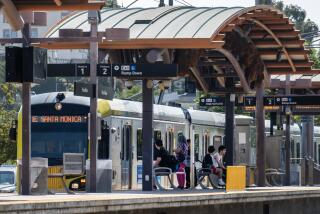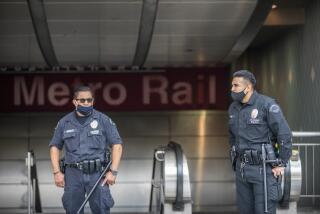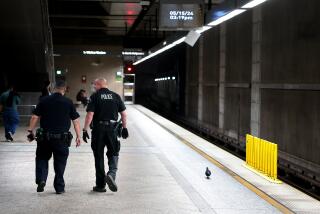Opinion: Should Metro charge higher fares for longer commutes?
On Thursday, Metro’s board of directors will consider raising fares for bus and rail service, and much of the debate will probably focus on how higher prices will affect low-income riders. Some 70% of Los Angeles transit commuters earn $25,000 a year or less, so there is legitimate concern over how to cover the cost of running a growing network of bus and rail lines without hurting most of the riders.
But there’s another related question on the horizon: Should Metro charge more for longer rides?
Several members of Metro’s board have said the agency will ultimately need to develop a distance-based fare system.
Currently, Metro charges per ride. You pay when you get on the bus and, if you switch to a subway or another bus to complete your trip, you pay again. The fare increase proposal being considered Thursday would enact a time-based system with free two-hour transfers. So you pay when you get on the bus but you don’t pay again as long as you switch to the subway or another bus within two hours.
On a distance-based system, your fare would be determined by where you get on and where you get off. The farther you ride, the more you pay.
As Metro’s rail network gets bigger, distance-based fares are the most equitable way to charge riders. After all, is it fair that someone who rides the bus 10 blocks pays the same amount as someone who rides 30 miles from Pasadena to Long Beach and can take advantage of free transfers? Transit systems in Washington, Seattle, Portland and the San Francisco Bay Area all use distance-based fares.
Metro studied fare models in 2010, and its staff noted some challenges to adopting distance-based fares in Los Angeles. Because a rider would have to swipe his fare card on entering and exiting the system, Metro would need to install gates at all stations. Currently, about half of the rail stations are gated; many stations weren’t designed for gates and may not have the space to accommodate turnstiles.
Staff also noted that a distance-based system requires more enforcement and is more complicated to operate.
Are those technical problems insurmountable? Probably not. There may be other issues, such as concern that higher fares for longer commutes would encourage people to drive instead of ride transit. Yet as Metro grapples with fare restructuring, the agency should at least take another look at distance-based fares.
More to Read
Sign up for Essential California
The most important California stories and recommendations in your inbox every morning.
You may occasionally receive promotional content from the Los Angeles Times.











